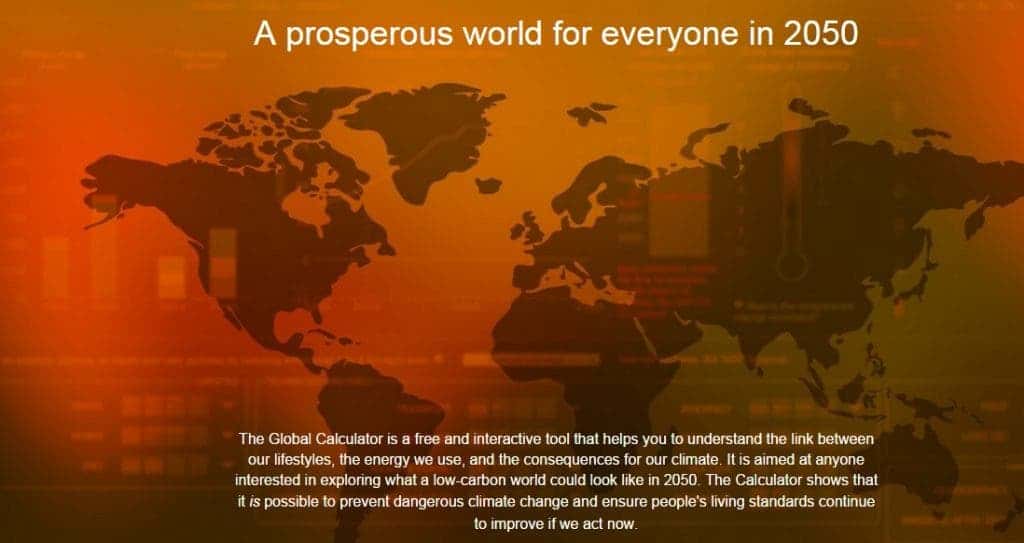The living standard of everybody in the world can be increased while also reducing CO2 emissions and limiting global warming to 2 degrees Celsius – that’s the conclusion of The Global Calculator, a new free, interactive tool developed by UK scientists in collaboration with organisations from India, US, China,and Europe.
Calculating the future
The Global Calculator can be used by businesses and researchers as well as the general public to explore how sustainable development can keep us on track for the “only” 2 degrees warmer planet by 2050. It’s also a really good tool to explore what possibilities this sustainable future yields.
The tool can be used by anyone and it doesn’t require special training – it’s quite intuitive to use, though it takes a while to get used to it. The goal is to basically explore scenarios through which our climate objectives could actually be reached.
“The calculator clearly highlights that we can meet our 2°C target while maintaining good lifestyles – but we need to set ambitious targets on all fronts and use innovation to address climate change,” said Mike Cherrett, director of operations at Climate-KIC, a European public-private partnership that jointly funded the tool.
The free and interactive tool uses data reviewed by 150 international experts. It acts on the assumption that global population will rise from 7 to 10 billion by 2050. It models the world’s energy and food consumption, among others. Using various models for various scenarios, it showed that even with the population increase, we can still live better lives and limit the environmental damage we are causing.
But it’s not going to be easy – forests around the world will need to grow by 5-15% percent, while crop yields will have to rise by 40-60%. The amount of CO2 emitted per unit of electricity would need to fall by 90%, with electric cars playing a key role.
The change will also have to come from us; people should shift their diets, and move the focus away from meat onto more healthier and less energy consuming foods.
A prosperous, eco-friendly future – hard but doable

Of course, this won’t come easy – we’ll all have to work in and pitch our part, but if the science behind this program checks out (and with the amount of researchers and specialists involved, it almost certainly does), then we can do it – and live more comfortably at the same time.
UK’s Energy and Climate Change Minister Ed Davey said,
“For the first time this Global Calculator shows that everyone in the world can prosper while limiting global temperature rises to 2 degree C, preventing the most serious impacts of climate change. Yet the calculator is also very clear that we must act now to change how we use and generate energy and how we use our land if we are going to achieve this green growth. The UK is leading on climate change both at home and abroad.”
Perhaps the most encouraging news is that protecting the environment doesn’t necessarily mean economic downfall (despite what some politicians or media outlets are saying) – on the contrary. A greener economy can work wonders, if the right decisions are made. British High Commissioner to India James Bevan said,
“The Global Calculator shows that with the right choices climate action is compatible with economic growth. This is a great tool which will allow business, policy makers, and civil society to explore ways to meet their energy demands while staying within the 2 degree C limit”.









